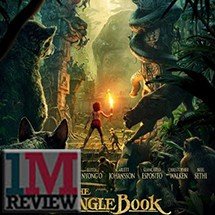“A remarkable testament to both Rudyard Kipling’s books and Walt Disney’s original film.”
Not surprisingly, Disney has done it again. The Jungle Book is simply a visual treasure, and it is a masterpiece that I did not want to end.
Director and producer Jon Favreau has certainly launched himself up there with the big dogs because of this film. He has both directed and produced noteworthy films and shows in the past, but his work in The Jungle Book undeniably surpasses anything he has done in the past.
The Jungle Book tells the classic tale of Mowgli, a man-cub raised by a pack of wolves in the jungles of India. Mowgli was found alone by Bagheera, a black panther, and brought to Raksha the wolf when he was a baby. The wolf pack raises Mowgli as one of their own until one day, Shere Khan, the Bengal tiger, discovers that the man-cub has been living among the animals in the jungle. Having been harmed by a man in the past, Shere Khan threatens to kill Mowgli and any animal that stands in his way. After overhearing the wolf pack’s debate about what they should do about this, Mowgli voluntarily decides to leave the jungle and go back to his man-village so he does not cause any more trouble. Bagheera accompanies him on his journey, but the two come across many difficulties along the way that alter the course of the story.
The effects of this film are absolutely incredible. Each and every computer-generated animal was created and developed with such precision, and I was completely in awe of how real it all looked. It truly is amazing how far CGI has come. The graphics of this film are positively breathtaking, and I truly cannot emphasize enough how impressively authentic each and every character and scene are.
- The Jungle Book
- Directed by
Jon Favreau - Cast
Neel Sethi, Bill Murray, Ben Kingsley, Idris Elba - Release Date
15 April 2016 - Rachel’s Score: 10/10
*****
I was curious to see how Scarlett Johansson’s voice would pair with the character of Kaa and, admittedly, I had my doubts. But her silky, soothing voice actually fit the snake perfectly, despite Kaa previously being male in the original 1967 animated version. Also, after watching this film, I am convinced that Idris Elba was put here on this earth just to be the voice of Shere Khan. His sultry rumbling, grumbling, and growling flawlessly embodied the notoriously intimidating tiger. Ben Kingsley, Bill Murray, and Christopher Walken also were excellent choices for their roles, as was Neel Sethi who played Mowgli. I honestly was astounded at how expertly each character was cast.
I was very pleased that Favreau decided to include the classic songs in the film (as were the others in the audience, who sang along to the tunes just as I did). “The Bare Necessities” rendition is both charming and nostalgia-inducing, and the visual effects of Mowgli and Baloo’s surroundings during the song paint a very tranquilizing picture. On the other hand, the “I Wan’na Be like You” scene is actually quite frightening. Where the original animated picture was all about monkeying around during this monkey song, the newest film was all threats and scare tactics. Favreau changed King Louie’s character from an orangutan to a 10-feet tall Gigantopithecus, an extinct species of ape, because orangutans are not actually native to India. This creature is quite the opposite of the eccentric, playful 1967 King Louie, but I actually appreciate Favreau’s take on this scene. He took away the carefree element and instead presented it more curtly: man must give fire to ape, or else.
I quite frankly have no critiques or complaints about this film. It will surely pave the way for even more astonishing visual mastery in the future and it was a remarkable testament to both Rudyard Kipling’s books and Walt Disney’s original film.






